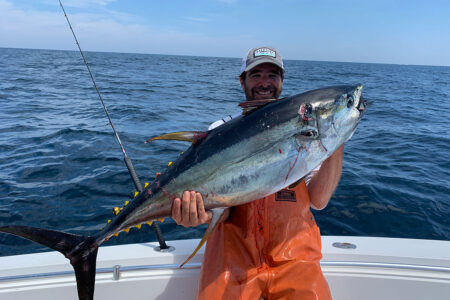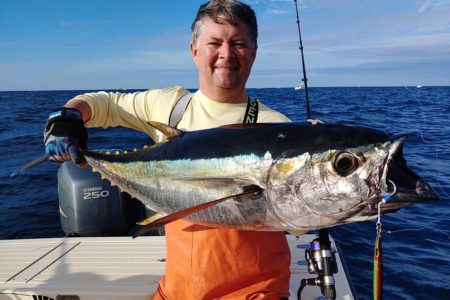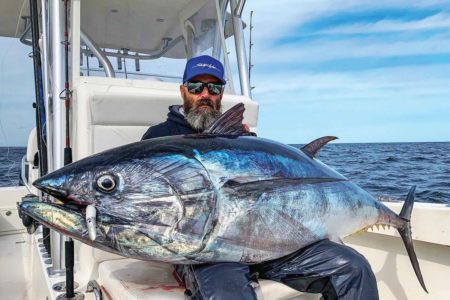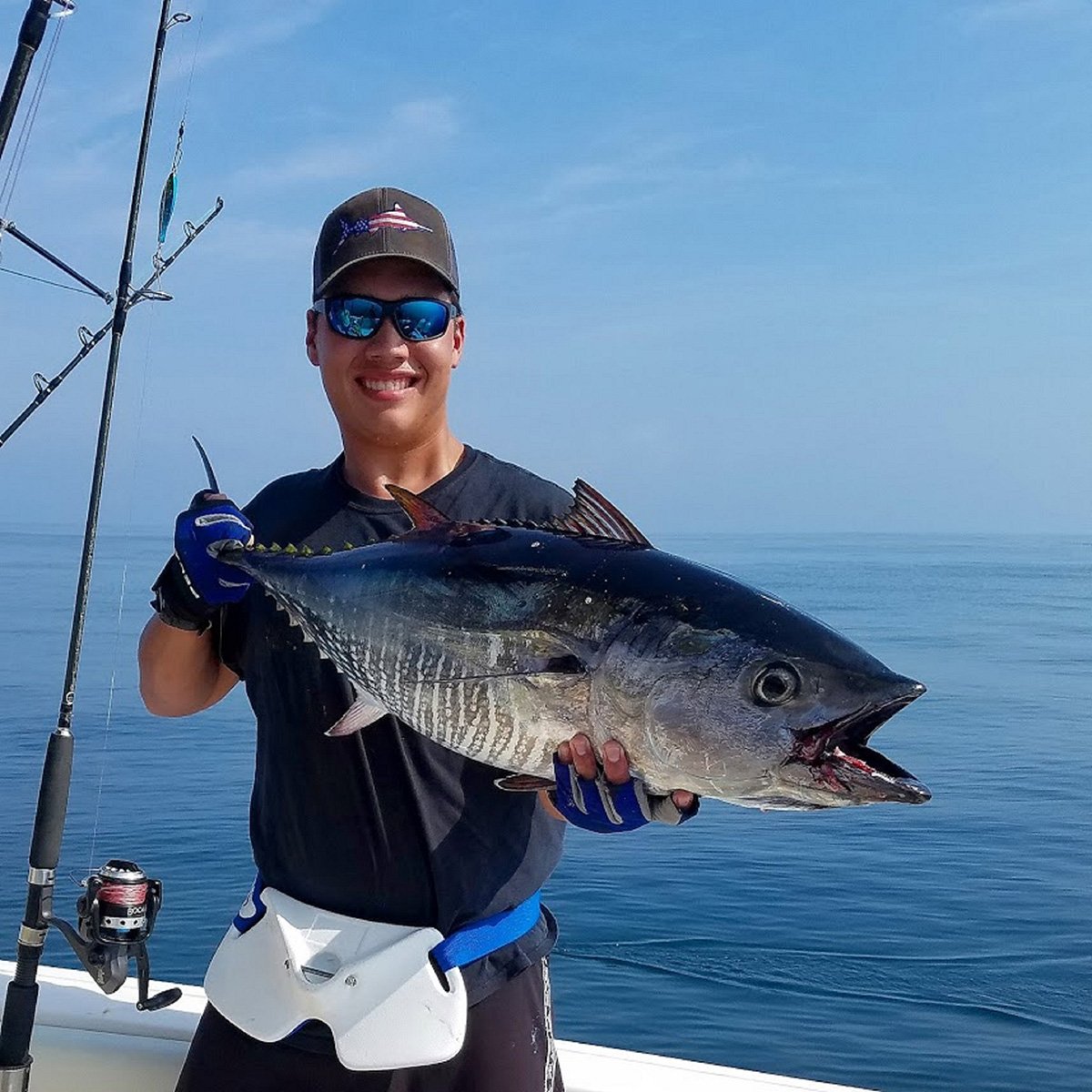
Start gearing up now for shorter, quicker and equally effective tuna trips – the boss may barely notice you were gone!
An express tuna trip—what exactly is it? It’s an inshore to midshore (up to 60 nautical miles out) trip for tuna. Leave the dock just at or before gray light and be back at the dock in time for a late lunch and enough time to (hopefully) prepare the day’s catch for dinner.
The average express tuna trip is around eight to nine hours total; from the second you pull away from the dock to the time you tie up the boat and cut the engines. Great concept, right? All the benefits of a tuna trip, without the long days and nights.
Well, this article is intended to give you trolling and location tips and tricks in order to make an express trip, a successful one.
Know Where to Go
Knowing where to go and what to look for is imperative. Very rarely can anyone go to a random spot and be able to consistently pull out tuna and mahi. There are key factors that determine whether or not the tuna will be at a specific location, and even with all of the key elements in place, it’s no guarantee that the fish will be there, let alone cooperate. Chlorophyll charts, sea surface temperature charts, and structure are often great things to look at in order to find a good starting spot. With limited time, it is essential to locate a couple areas within a close proximity of each other, and focus only on those areas.
Water clarity and cleanliness play a large part in attracting bait and life. Blue water is ideal, however, blue water may be harder to come by during the later season due to algae blooms, so the water that is cleanest and closest to blue water possible is sufficient. A temperature break accompanied by a water color change is definitely something to investigate further because temperature and color breaks are both baitfish attractants.
Next is bottom structure. Look for depth changes, holes, ledges, lumps, wrecks and other irregularities on the bottom. Typically, most of these are listed on a good offshore chart. These irregularities create upwellings and current breaks, which attract baitfish and ultimately larger fish.
Being able to know exactly where fish are at any given time would be great, right? Recent info is the closest thing to it and is definitely a large factor in deciding where to go. If someone had fish at a certain spot the day before a planned trip, it would definitely make sense to go there, especially if the fish have been there for an extended period of time. Although fish are always on the move, if fish have been in an area for longer than a week or two, chances are that there is bait holding them there. If the bait they’re on is sand eels, the fish have been known to stick around for weeks with them.
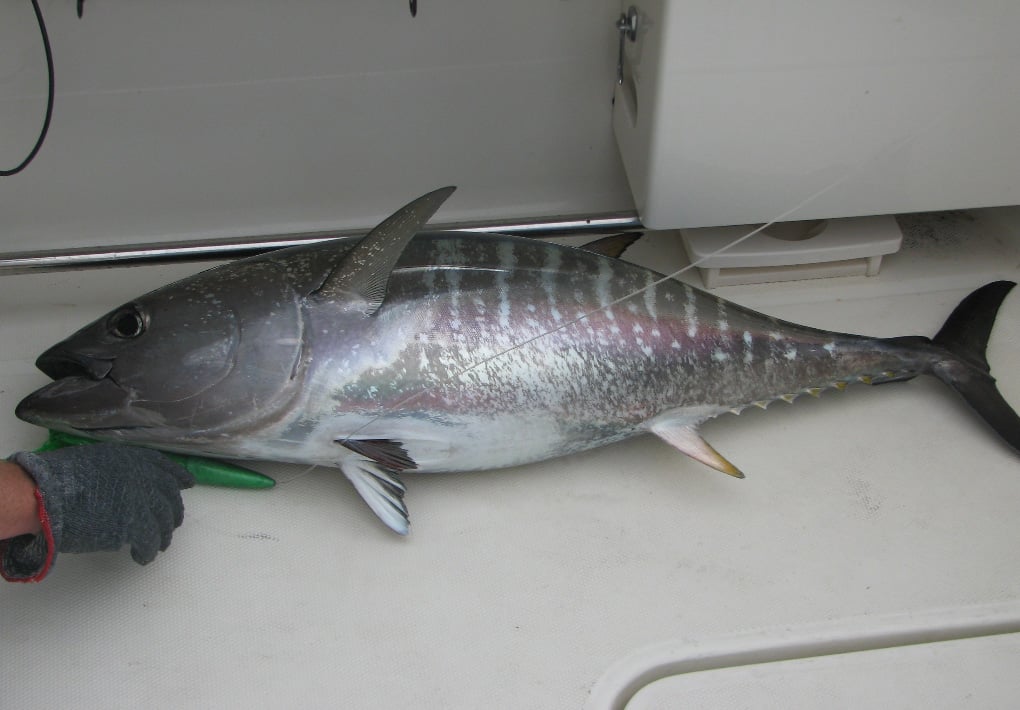
Know What to Troll
Alright, so the homework has been done, your crew has been arranged, the spot has been chosen, the boat is fueled and you’re ready to roll. But wait, what tactics are going to be used in order to actually get the fish in the boat? Trolling is definitely one of the most popular and effective tactics and with limited time, it is the best tactic to cover ground and raise fish.
Trolling a spread that includes: ballyhoo on Ilander and Joe Shute heads, Sterling spreader/splash bars with 6- to 9-inch squids, FishinMission spreader/splash bars with 4-1/2-inch squids, Boone feathers, cedar plugs and daisy chains is the norm here off the coast of New Jersey. Colors range from the traditional rainbow, green/zucchini, pink, black and purple, blue and silver, and white all the way to crazy colors like orange and green, teal and red and glow.
Having at least one lure of each of the traditional colors is a great way to see what the fish are interested in. If a particular color gets hit (by the target species) more than once, it’s time to put another lure of the same color in the spread. Trolling is usually done anywhere between 4.5 and 7.5 knots. In my opinion, the faster trolling is preferred because it keeps bluefish off the spread, which will definitely tear up the gear and compromise chances of catching a nice tuna.
Also, tuna are capable of reaching speeds over 45 mph, so going too fast is not a problem. Trolling is a great way to cover ground and pinpoint where the fish are, along with being able to produce a bite when there aren’t many fish around.
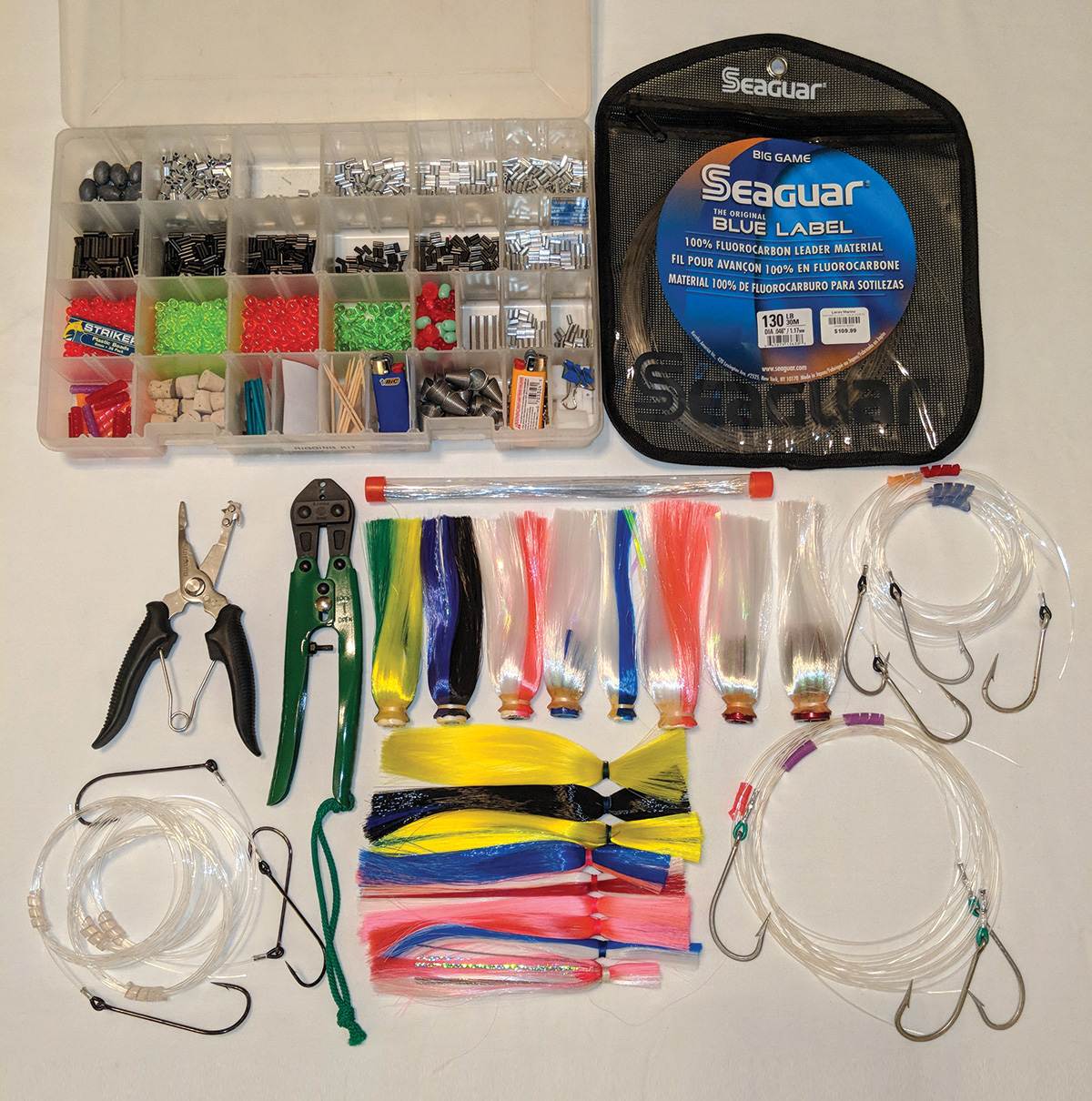
Cover the Spread
Typically, a smaller boat (24 to 28 feet) will troll anywhere from five to eight lines. Whether there are five or eight lines being trolled, all spreads have these basic lure placement techniques: two flat lines, two outrigger lines, and a way back lure down the center. The more lures trolled, the better the chances of a hookup. However, it is necessary that the lines are not tangling and that the crew will be able to clear them quickly in the event of a hookup.
Flat lines are the lines/rods in the back corner or the cockpit. The lines are clipped into a release clip or rubber band, close to the water, in order to decrease the angle in which the lures are pulled. This helps lures like cedar plugs stay in the water while still being close to the boat. A spreader bar, daisy chain, cedar plug, ballyhoo, or pretty much any other lure can be trolled off the flat line. Pink is always a safe bet for lure color because mahi especially are known for hitting pink lures and coming right up to the boat. This would be a good application for a FishinMission splash bar with smaller squids because mahi love smaller baits as well.
Tuna also won’t hesitate to hit the smaller lures because they imitate sand eels well. Elephants eat peanuts right?
Spreader bars, usually 18-inch splash bars, and ballyhoo, either skirted or naked are the most popular lures to be trolled off the outriggers or outrodders. These increase the width of the spread. There are also new Sterling “wide tracker” spreader bars now that have a keel on the bottom that causes the spreader bars to go out even wider into clean, wake-free water. These are a game changer for sure. Sometimes some meat outside the track of the boat is the difference between a bite or not ,so putting a skirted ballyhoo off one of the riggers is a great idea.
The way back lure is put way back down the center, usually at least 200 yards. A center rigger is preferred because it allows a midway back center line to be put out. The way back lure can either be a large 36-inch to 42-inch spreader bar or a single skirted ballyhoo (usually with a 5- to 8-ounce head) or skirted ballyhoo chain. Large inshore bluefin are known to sometimes only hit way back lures. Trips can get saved by one bite on a lure that way 250 yards back or more. A pain to reel in and check often, but it is definitely worth it when the drag starts screaming.
If a way back along with a mid-way back line can be put out, it would be best to have a ballyhoo way back and a large spreader bar mid-way back. The further back a ballyhoo on a weighted head goes, the deeper it goes. If the fish are in the middle of the water column or deeper, then the way back ballyhoo is essential in order to entice a fish to bite.
Overall, express tuna trips are fun and relatively quick trips that can lead to some great fishing. With proper homework, they can have the benefits of a full day offshore without the expense or long travel time to the canyon. Going to the right spots and applying the right trolling techniques won’t guarantee that a tuna or mahi hits the deck, however, it will increase the chance of putting meat in the box. It will also improve confidence in knowing that everything being done, is being done right. Whether or not the fish will cooperate on these quit hits, well, that’s an article for another time – perhaps once the season begins!
The author primarily runs off the Central Jersey coast during the season; if you have questions about tactics, lures and spreads, you can also find him at work at Lacey Marine in Forked River during the season, when he’s not on the morning troll or steaking tuna back at port in the early afternoon.
| FISH ON! KEEP IT UP |
|---|
| One important thing to note, tuna normally run in packs. When a rod hooks up, it is smart to keep the boat at trolling speed and start zig-zagging. The erratic motion of the boat is known to draw more tuna to the spread and trigger a strike. Only slow the boat after being sure that there won’t be any additional hookups. There are no guarantees though, tuna will hit lines that are still in the water while fighting the fish no matter how fast or slow the boat is moving. – JKM |
